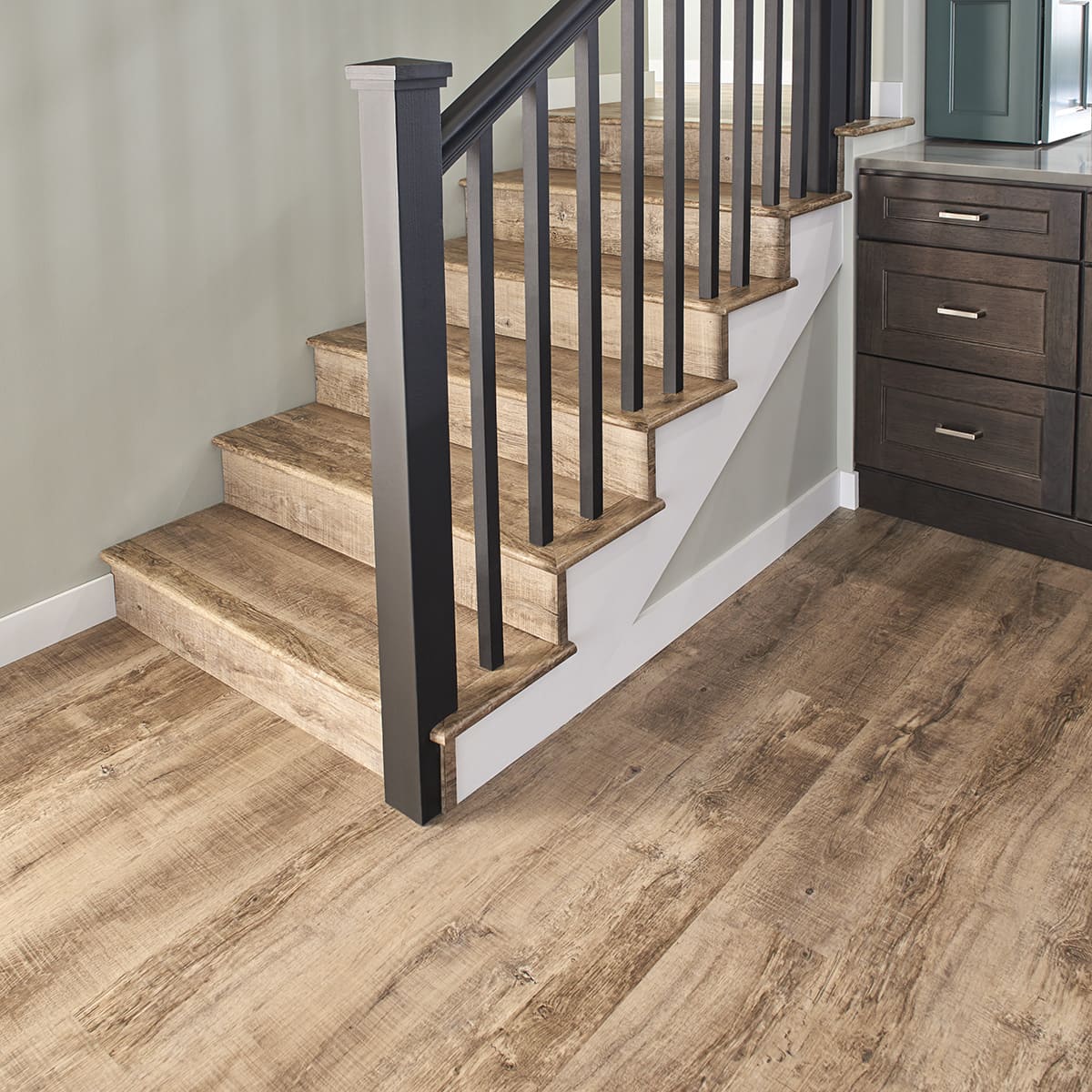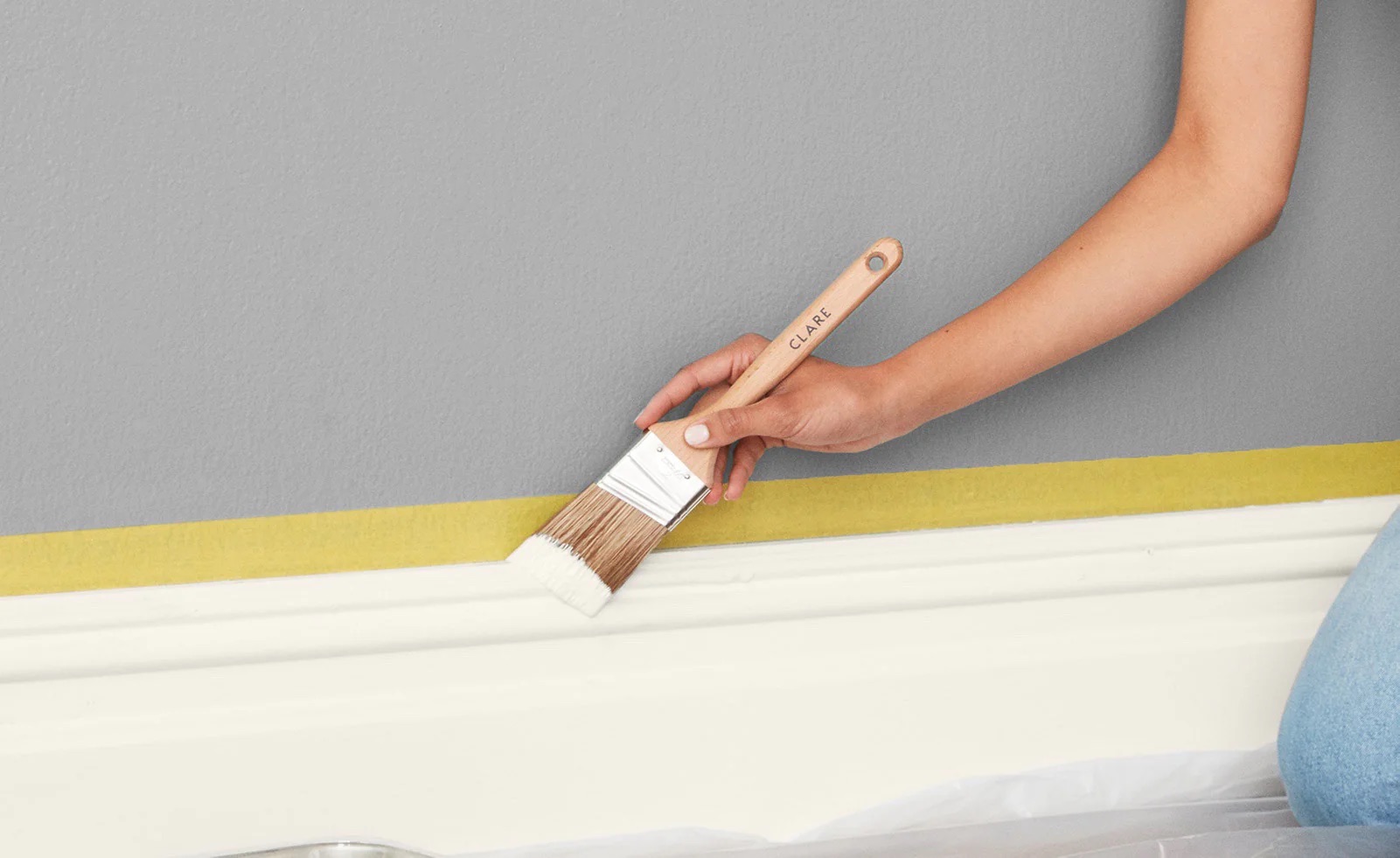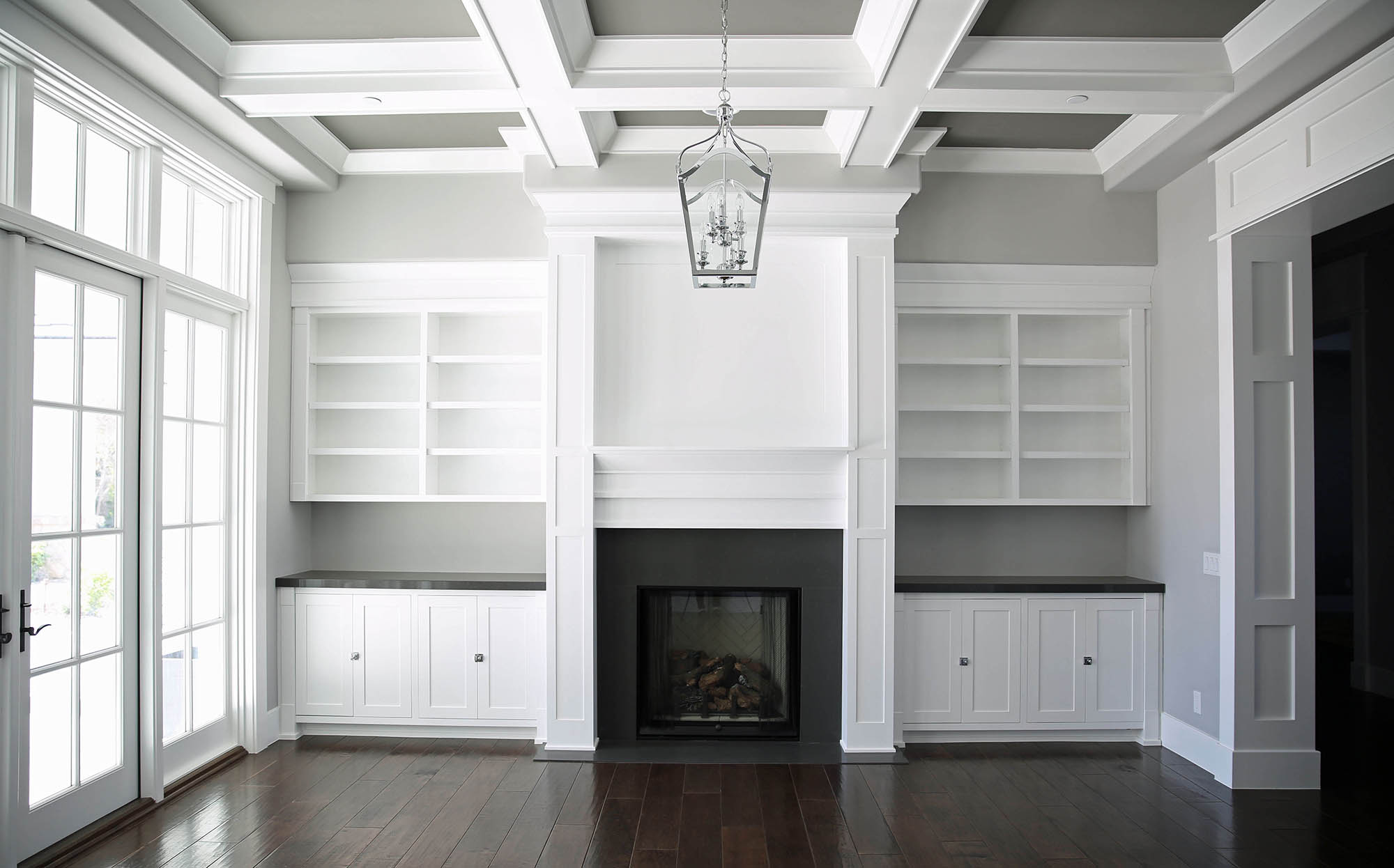Home>diy>Building & Construction>What Is Trim In Construction


Building & Construction
What Is Trim In Construction
Modified: December 7, 2023
Learn the importance of trim in building construction and how it enhances the overall appearance and functionality of a structure. Discover the various types of trim used in construction projects.
(Many of the links in this article redirect to a specific reviewed product. Your purchase of these products through affiliate links helps to generate commission for Storables.com, at no extra cost. Learn more)
Introduction
In the world of construction, there are numerous components that come together to create a finished structure. From the foundation to the walls and everything in between, each element plays a vital role in the durability and aesthetics of the building. One often overlooked but essential aspect of construction is trim.
Trim refers to the finishing details that are added to a building to enhance its appearance and functionality. It is the final touch that brings a sense of cohesion and refinement to the overall design. Whether it’s in the form of baseboards, crown molding, window casings, or door frames, trim serves a dual purpose of providing a clean edge while also protecting the structure from wear and tear.
Trim in construction not only serves a functional purpose but also adds character and style to a building. It can transform a bland and ordinary space into an elegant and visually pleasing one. In this article, we will explore the definition, functions, types, and importance of trim in construction, as well as provide some tips for installing trim effectively.
Key Takeaways:
- Trim in construction serves as both a protective and decorative element, enhancing the building’s aesthetics, defining spaces, and adding character while safeguarding against wear and tear.
- Attention to detail and precision are crucial when installing trim in construction, ensuring a flawless and visually pleasing finish that elevates the overall aesthetic of a building.
Read more: How To Trim Garage Door
Definition of Trim in Construction
Trim in construction refers to the decorative and protective elements that are added to the interior and exterior of a building. It is the final step in the construction process where various materials, such as wood, PVC, or composite, are installed to create borders, transitions, and accents.
Trim is typically applied to areas where different building materials meet, such as the junction between walls and floors, windows and walls, or doors and walls. It is designed to cover joints, hide imperfections, and provide a smooth and polished finish.
Trim can take many forms, including baseboards, crown molding, wainscoting, chair rails, window casings, door frames, and decorative elements like rosettes and medallions. These elements not only add visual interest to a space but also serve practical purposes, such as protecting walls from impact damage, covering gaps, and providing a transition between different surfaces.
Trim in construction can be made from various materials, each with its own advantages and limitations. Wood is a popular choice for trim due to its versatility and natural aesthetic. It can be stained or painted to match the desired style of the building. PVC trim offers a durable and low-maintenance alternative to wood, as it is resistant to rot, decay, and insect damage. Composite trim combines the benefits of both wood and PVC, offering the look of wood with the durability and longevity of PVC.
Overall, trim in construction is an essential component that adds both functional and decorative value to a building. It completes the overall design, creating a polished and professional look while also protecting the structure from everyday wear and tear.
Functions of Trim in Construction
Trim serves a multitude of functions in construction that go beyond just aesthetic appeal. Let’s delve into the key functions of trim:
- Protection: One of the primary functions of trim is to protect the underlying structures. Baseboards, for example, protect walls from scuffs, dents, and damage caused by furniture or vacuum cleaners. Window casings and door frames protect the surrounding walls from moisture, drafts, and insects. Trim acts as a barrier against wear and tear, extending the lifespan of the building.
- Coverage of Joints and Gaps: Trim is used to cover the gaps and joints between different surfaces, creating a seamless transition. It conceals uneven edges, gaps, and imperfections, providing a clean and finished appearance. For instance, crown molding can be used to cover the joint between the ceiling and wall, creating an elegant and smooth transition.
- Enhancement of Aesthetics: Trim plays a crucial role in enhancing the visual appeal of a building. It adds depth, texture, and architectural interest to otherwise plain surfaces. Crown molding, chair rails, and wainscoting contribute to a sense of elegance and sophistication. Well-chosen trim can transform a room from ordinary to extraordinary, creating a focal point and tying the overall design together.
- Definition of Space: Trim helps define and differentiate spaces within a building. For instance, baseboards create a clear boundary between the floor and wall, providing a visual anchor. Window casings frame the view and define the opening. Trim can also create visual divisions, such as chair rails that separate wall surfaces and wainscoting that delineates the lower portion of a wall.
- Style and Character: Trim adds architectural detail and character to a building, reflecting the style and era of construction. Different trim profiles, from sleek and modern to intricate and ornate, can evoke a specific design style, such as Victorian, Craftsman, or Contemporary. Trim allows for customization and personalization, enabling homeowners and designers to create a unique and desired aesthetic.
In summary, trim in construction serves a diverse range of functions, including protection, coverage of joints and gaps, enhancement of aesthetics, definition of space, and adding style and character to a building. It is a versatile and indispensable element that brings both practicality and beauty to the overall design.
Types of Trim in Construction
Trim in construction comes in various types, each serving a specific purpose and adding its own unique touch to the overall design. Let’s explore some common types of trim:
- Baseboards: Baseboards, also known as skirting boards, are installed at the bottom of walls to provide a smooth transition between the wall and the floor. They protect the wall from damage and cover any gaps that may occur at the floor/wall junction.
- Crown Molding: Crown molding is installed at the junction between walls and ceilings. It adds elegance and architectural interest to a space, creating a visual transition and defining the upper edge of a room.
- Window Casings: Window casings surround the perimeter of windows, providing a decorative frame and protecting the surrounding walls from moisture and drafts. They can range from simple and clean lines to more elaborate profiles, depending on the desired style.
- Door Frames: Door frames, also known as door casings, outline the opening of a doorway. They provide a finished appearance and can also serve as a transition between rooms or between interior and exterior spaces.
- Chair Rails: Chair rails are installed horizontally on walls at a height of around 30 inches from the floor. They were originally intended to protect walls from chair backs, but now they primarily serve as a decorative feature and a way to divide wall surfaces, especially in dining rooms or other areas prone to furniture contact.
- Wainscoting: Wainscoting is the installation of decorative paneling on the lower portion of a wall, typically reaching about a third of the wall’s height. It adds texture, depth, and sophistication to a space and can be combined with a chair rail for a more dramatic effect.
- Decorative Elements: Trim also includes various decorative elements such as rosettes, medallions, and corbels. These intricate pieces are used to add architectural detail and visual interest to a building’s interior or exterior.
These are just a few examples of the many types of trim available in construction. Each type has its own distinct purpose and aesthetic appeal. The choice of trim depends on the desired design style, architectural features, and personal preferences.
When trimming in construction, always measure twice and cut once to ensure accuracy and minimize waste. Use high-quality materials and precise tools for a professional finish.
Examples of Trim in Construction
Trim in construction comes in a variety of forms, each contributing to the overall aesthetics and functionality of a building. Let’s explore some common examples of trim:
- Baseboards: Baseboards are installed at the bottom of walls, where they meet the floor. They provide a clean and finished look, covering any gaps and protecting the walls from scuffs and damage. Baseboards can be simple and straight or feature more elaborate profiles, depending on the desired style.
- Crown Molding: Crown molding is installed at the junction between walls and ceilings. It adds a touch of elegance and sophistication to a room, giving the space a more polished and refined appearance. Crown molding comes in a variety of styles, from simple and minimalistic to intricately detailed.
- Window Casings: Window casings surround the perimeter of windows, providing a decorative frame and covering the gap between the window frame and the wall. They can be a simple trim or feature more ornate profiles, depending on the overall design theme. Window casings enhance the visual appeal of windows and add a finishing touch to the surrounding walls.
- Door Frames: Door frames, also known as door casings, are installed around doorways. They serve as both a functional and decorative element, providing a clean transition between rooms and adding visual interest. Door frames can be plain or feature intricate details, depending on the desired style of the building.
- Chair Rails: Chair rails are installed horizontally along the walls, typically at a height of about 30 inches from the floor. They serve as a visual divider and protect the walls from scuffs and dents caused by chairs. Chair rails can be a simple molding or feature more elaborate designs, adding dimension and style to a room.
- Wainscoting: Wainscoting is the installation of decorative paneling on the lower portion of walls, typically covering about a third of the wall’s height. It adds texture, depth, and visual interest to a room, transforming a plain wall into a focal point. Wainscoting can be simple with clean lines or include intricate patterns and molding details.
- Decorative Elements: Trim also includes various decorative elements such as rosettes, medallions, and corbels. These decorative pieces can be installed on walls, ceilings, or furniture to add an extra layer of architectural detail and visual interest. They come in various shapes, sizes, and designs, allowing for customizations to suit the desired aesthetic.
These examples illustrate the range of trim options available in construction. Whether it’s baseboards, crown molding, window casings, door frames, chair rails, wainscoting, or decorative elements, each type of trim adds its own unique touch to enhance the overall design of a building.
Read more: Molding & Trim Designs
Importance of Trim in Construction
Trim may often be overlooked in the construction process, but its importance should not be underestimated. Here are some key reasons why trim is crucial in construction:
- Aesthetics: Trim adds a finishing touch to a building, enhancing its overall aesthetics. It brings a sense of sophistication and style to the space, transforming it from ordinary to extraordinary. The right choice of trim can elevate the visual appeal of a building, creating a cohesive and visually pleasing design.
- Definition and Detail: Trim helps define and highlight architectural features and details. It can accentuate the lines and contours of a building, adding depth and dimension. For instance, crown molding draws the eye upward and emphasizes ceiling height, while baseboards anchor the walls and provide a clean transition to the floor.
- Protection and Durability: Trim serves as a protective barrier, safeguarding the underlying structures from wear and tear. Baseboards protect walls from scuffs and furniture damage, window casings shield the structure from moisture and drafts, and door frames reinforce the stability of doorways. Trim increases the longevity and durability of a building.
- Seamless Transitions: Trim covers gaps and joints between different materials, creating seamless transitions. It conceals rough edges, unsightly joints, and imperfections, providing a polished and professional appearance. Trim ensures that the transitions between different surfaces, such as walls and floors or windows and walls, are smooth and visually appealing.
- Personalization and Customization: Trim allows for personalization and customization of a building’s design. With a wide variety of trim styles, materials, and profiles available, builders and homeowners can choose options that reflect their unique tastes and preferences. Trim adds character and individuality to a building, making it stand out from the rest.
- Value Enhancement: Well-executed trim adds value to a building. It enhances the market appeal and resale value, making the property more attractive to potential buyers or tenants. Attention to detail and quality craftsmanship in trim installation can make a significant difference in the perceived value of a building.
In summary, trim plays a crucial role in construction by enhancing aesthetics, providing definition and detail, offering protection and durability, ensuring seamless transitions, allowing for personalization, and increasing the value of a building. It is not merely a decorative element but a functional and essential component that completes the overall design and adds longevity to the structure.
Tips for Installing Trim in Construction
Installing trim requires attention to detail and precision to ensure a professional and polished finish. Here are some important tips to consider when installing trim in construction:
- Measure Twice, Cut Once: Accurate measurements are crucial when working with trim. Take precise measurements of the walls, windows, doors, or any other areas where trim will be installed. Double-check the measurements before making any cuts to avoid wastage and ensure a perfect fit.
- Use the Right Tools: Having the proper tools is essential for successful trim installation. Common tools include a miter saw or miter box for cutting accurate angles, a coping saw for intricate cuts, a nail gun or hammer for securing the trim, a level for ensuring straight lines, and a caulk gun for sealing gaps.
- Secure Properly: Use appropriate fasteners, such as finishing nails or trim screws, to securely attach the trim to the wall or surface. Make sure to countersink the nails or screws slightly below the trim surface to allow for puttying and sanding later.
- Pre-paint or Pre-finish: Pre-painting or pre-finishing the trim before installation can save time and ensure a smoother and neater application. It allows for easier access to all areas of the trim, including edges and corners, resulting in a more consistent and professional finish.
- Ensure Level and Plumb: Use a level and plumb line to ensure that the trim is properly aligned and straight. This is especially important for pieces like baseboards or chair rails, where any deviations from level or plumb can be easily visible and affect the overall appearance.
- Miters and Joints: When working with corners or joints, take the time to miter or cope the trim for a seamless and tight fit. Ensure that the angles are cut accurately to create smooth and clean joints. Mitered and coped joints contribute to a professional and polished look.
- Seal and Caulk: After installing the trim, use a suitable sealant or caulk to fill any gaps and create a seamless finish. This helps to prevent moisture infiltration and improve the overall appearance of the trim. Smooth the caulk lines with a wet finger or caulking tool for a neat and tidy finish.
- Attention to Detail: Pay attention to the small details, such as making sure the trim aligns properly with adjacent pieces, ensuring consistent reveal (the amount of trim that is visible), and avoiding visible nail holes or gaps. Taking time and care during installation will result in a high-quality and professional look.
Remember, trim installation requires patience, precision, and attention to detail. By following these tips and using proper techniques and tools, you can achieve a flawless and visually pleasing finish that enhances the overall aesthetic of a building.
Conclusion
Trim in construction may be the final step, but its impact on a building’s overall design and functionality should not be underestimated. From baseboards to crown molding, window casings to door frames, trim serves a variety of important functions.
Not only does trim enhance the aesthetic appeal of a building, but it also provides protection, covers joints and gaps, and adds definition and character to spaces. It plays a vital role in creating seamless transitions, personalizing designs, and increasing the value of a property.
When installing trim, attention to detail is key. Taking accurate measurements, using the right tools, securing the trim properly, and paying attention to angles and joints ensures a professional and polished finish. Pre-finishing or pre-painting the trim before installation can save time and lead to better results.
By following these tips and techniques, builders, homeowners, and designers can achieve a high-quality trim installation that elevates the overall look and feel of a building.
In summary, trim in construction is an essential component that adds both functionality and beauty to a building. It completes the design, protects the structure, and enhances the overall aesthetic appeal. Don’t overlook the importance of trim in your next construction project!
Frequently Asked Questions about What Is Trim In Construction
Was this page helpful?
At Storables.com, we guarantee accurate and reliable information. Our content, validated by Expert Board Contributors, is crafted following stringent Editorial Policies. We're committed to providing you with well-researched, expert-backed insights for all your informational needs.















0 thoughts on “What Is Trim In Construction”